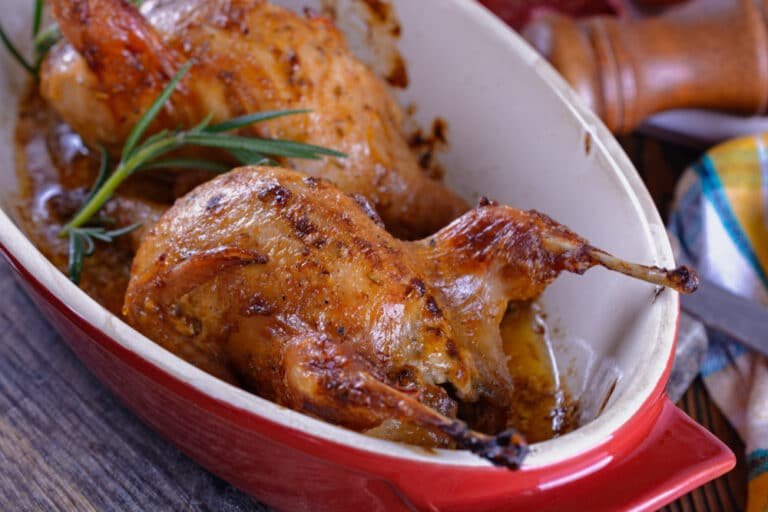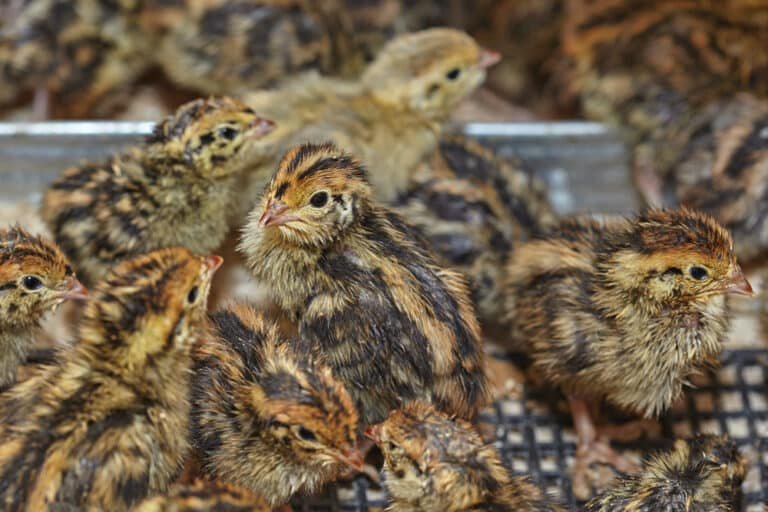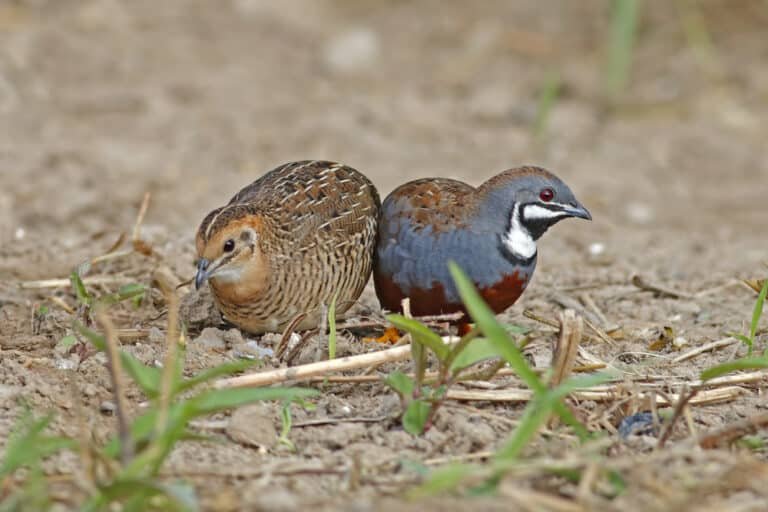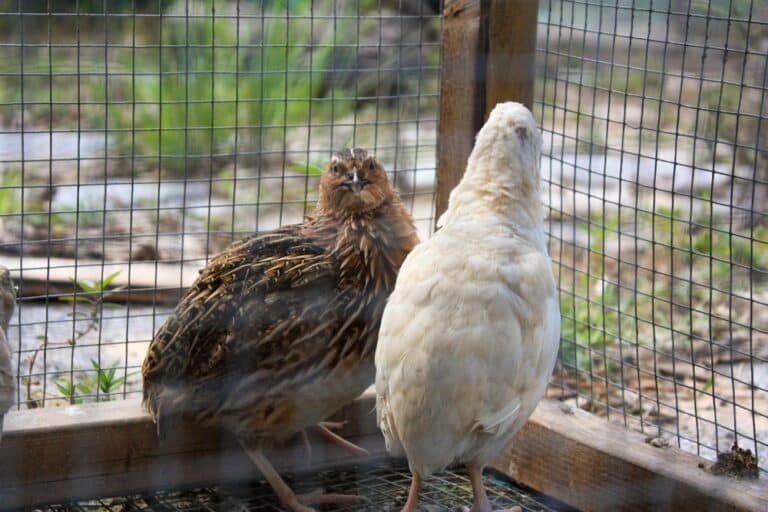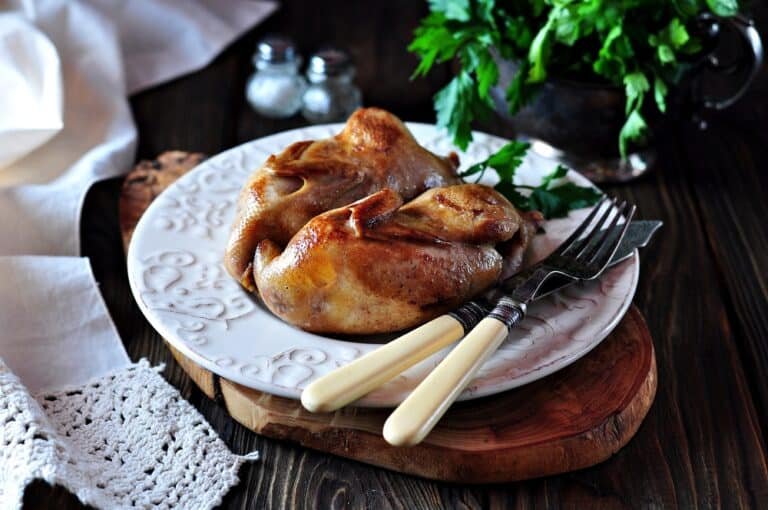The Virginia Quail – Why It’s Better Than California
Virginia Quail is a fascinating bird species that holds a significant place in the biodiversity of the eastern United States. These small, ground-dwelling birds are renowned for their enchanting appearance and unique behaviors.
With their intricate plumage patterns and delightful calls, Virginia Quail has captured the imaginations of nature enthusiasts and researchers alike. However, beyond their aesthetic appeal, these birds play a crucial role in maintaining the balance of ecosystems they inhabit, especially when compared to California quail.
Virginia Quail Overview
Virginia Quail, commonly called bobwhite quail or simply bobwhites due to their distinctive call, is a New World quail family Odontophoridae member. They are native to North America and primarily found in regions east of the Rocky Mountains. The Virginia Quail is a small-sized bird measuring approximately 10-12 inches long with an average weight ranging from 5 to 8 ounces.
Their overall appearance showcases a robust build with rounded wings and short tails. Their plumage exhibits an exquisite blend of earthy brown hues on their upper body and striking black stripes on their head and neck.
Virginia Quail’s Role in the Ecosystem
Vitality thrives within each component of our ecosystems, including every living organism that contributes to its functionality. The presence of Virginia Quail within their natural habitats offers numerous ecological benefits that reverberate throughout diverse landscapes. One key aspect is their role as seed dispersers for various plant species by consuming fruits containing seeds and depositing them elsewhere after digestion.
This process aids in vegetation growth and colonization across their range. Additionally, Virginia Quail actively prey on insects, thus contributing to pest control by reducing populations of harmful insects that can damage crops and other plant life.
They are also an important food source for many predators, including mammals and raptors, further upholding the intricate web of predator-prey dynamics. Furthermore, these birds play a crucial part in maintaining biodiversity as they serve as indicators of habitat quality.
Their presence or absence can provide insights into the health and vitality of ecosystems. Therefore, conservation efforts focused on preserving Virginia Quail populations have broader implications for safeguarding overall ecosystem integrity.
Comparison with Other Quail Species
The Virginia Quail is a distinct species within the quail family, showcasing unique characteristics that differentiate it from other quail. At the same time, it shares similarities with various other species, such as the California Quail and Gambel’s Quail; notable differences in appearance, behavior, and habitat preference set Virginia Quail apart.
For instance, unlike their counterparts in western North America, Virginia Quails are known for their distinctive whistling calls and preference for dense vegetation within eastern forests and fields.
Physical Characteristics
Size and weight of adult Virginia Quail
Adult Virginia Quail are characterized by their moderate size, with males and females displaying slight variations. On average, males measure around 9-10 inches in length from the beak to the tip of the tail, while females tend to be slightly smaller at 7-8 inches. These quail possess a compact build with a plump appearance, accentuated by their rounded bodies.
Adult males weigh approximately 5-6 ounces, whereas females are slightly lighter at 4-5 ounces. Their size and weight make them well-adapted for navigating through various types of vegetation in their habitat.
Plumage coloration and patterns
Virginia Quail exhibits exquisite plumage coloration, showcasing an intricate blend of earthy tones and patterns. The male Quail’s head is adorned with a rich reddish-brown crown that extends down the nape of its neck, creating a striking contrast against its white throat.
Their back feathers display a mottled pattern of chestnut brown spots on a buffy background, allowing them to camouflage within their surroundings seamlessly. Additionally, they feature dark streaks along their flanks and distinct black-and-white scalloping on their wings, which add further intricacy to their overall appearance.
Sexual dimorphism in appearance
Virginia Quail exhibits sexual dimorphism in terms of physical appearance. Males possess more vibrant coloring than females as an evolutionary adaptation for courtship displays. As previously mentioned, males showcase a reddish-brown crown on their heads, while females lack this feature or have only subtle hints.
Furthermore, male Quail boasts brighter plumage with heightened saturation and contrast than females’ more subdued coloring. This difference in appearance aids in distinguishing between genders, facilitating effective courtship rituals, and ensuring successful reproduction within the species.
Habitat and Distribution
Preferred habitats of Virginia Quail in Virginia state
Virginia Quail is widely distributed throughout Virginia. These charming birds favor habitats characterized by grasslands, agricultural fields, and shrubby areas. The presence of dense vegetation is crucial for their survival as it provides cover for nesting and protection against predators.
They can be found within Virginia in various ecosystems, such as open woodlands, brushy fields, forest edges, and even roadsides. Additionally, they prefer areas with abundant food sources like seeds and insects.
Geographic range and distribution across North America
Beyond their presence in the beautiful landscapes of Virginia, Virginia Quail has an extensive range across North America. Their distribution covers most states east of the Mississippi River and extends into parts of southwestern Canada.
They are commonly found in regions with similar habitat preferences, such as the southeastern United States (including Alabama, Georgia, and Florida), as well as parts of New England (including Connecticut and Massachusetts) and the Midwest (including Ohio and Illinois). This widespread presence demonstrates their adaptability to different environments within their larger geographic range.
However, it’s worth noting that certain sub-species may have more localized distributions within specific regions or states. The preferred habitats for Virginia Quail in Virginia state include mixed grasslands with shrubby areas that provide cover for nesting purposes and protection against predators.
Across North America, these quail can be found in various regions east of the Mississippi River, spanning from southeastern states to parts of Canada. Their adaptability allows them to thrive in different environments within this larger geographic range.
Behavior and Social Structure
Daily activities and feeding habits
Under the warm Virginia sun, the Virginia Quail engages in various daily activities that revolve around its search for sustenance. The diet of this charming bird is diverse, consisting of an assortment of seeds, insects, fruits, and tender vegetation.
It skillfully employs its sharp bill to crack open seeds, providing a vital energy source. Insects are an essential protein-rich component in their diet, which they capture with impressive agility.
Additionally, the Quail indulges in these juicy treats when fruits are abundant during certain seasons. With their keen eyesight and acute sense of hearing, these birds expertly navigate through dense vegetation to locate their preferred food sources.
Foraging techniques employed by Virginia Quail
The Virginia Quail demonstrates remarkable foraging techniques that have evolved over centuries. They use scratching and pecking to unearth hidden insects or seeds beneath leaf litter or loose soil.
Using their feet with precision and finesse, they scratch away layers of debris to expose delectable morsels concealed below. This foraging technique not only helps them secure food but also aids in aerating the ground and promoting regrowth in their habitat.
Reproduction and breeding behavior
Mating rituals among Virginia Quails are captivating displays filled with intricate movements and vocalizations that showcase their vibrant plumage. During courtship displays, males raise their heads high while extending their tails upward to create an impressive fan-like shape that accentuates their striking coloration. As part of this ritual dance, they produce a series of distinct calls reverberating through the air as if composing a musical symphony.
Nesting habits among Virginia Quails involve meticulously selecting suitable locations within grasslands or brushy areas where natural cover is available. Females construct shallow, bowl-shaped nests using plant materials such as grasses and leaves, expertly blending them into the surrounding environment for camouflage.
These skilled architects create nests that provide a haven for their precious eggs. The incubation period typically lasts around three weeks, during which the female diligently cares for the eggs, rarely leaving the nest except to feed briefly nearby.
Once hatched, precocial chicks emerge from their speckled shells and are swiftly led away by their attentive parents to begin exploring the world around them. Each aspect of behavior and social structure in Virginia Quails showcases their remarkable adaptability in feeding habits and reproductive strategies, underscoring their significance within the avian community.
Environmental Adaptations
Physiological Adaptations to Survive Harsh Weather Conditions
Virginia Quail, being resilient creatures, has developed remarkable physiological adaptations to endure extreme weather conditions such as cold winters and hot summers. During frigid winters, these quail can fluff up their feathers, creating an insulating layer of air that helps retain body heat and shield them from the biting cold.
Additionally, they have a higher metabolic rate during colder months, enabling them to generate more internal heat. Conversely, Virginia Quail employ various mechanisms to cool themselves down when faced with scorching summers.
They reduce their activity levels during the hottest parts of the day and seek shelter in shaded areas or dense vegetation where temperatures are comparatively lower. Furthermore, their bodies regulate temperature by panting and dilating blood vessels in their extremities to dissipate excess heat.
Behavioral Adaptations to Avoid Predators or Find Food
Survival instincts are deeply ingrained in Virginia Quail’s behavioral repertoire. These birds exhibit several cunning adaptations to evade predators lurking in their habitats,
When sensing danger or upon detecting a predator’s presence nearby, they become remarkably still and blend seamlessly into their surroundings by crouching low and pressing themselves against the ground. This behavior helps them reduce visibility and remain concealed from potential threats.
Moreover, Virginia Quail is skilled at swiftly taking flight when necessary—employing rapid wingbeats coupled with sharp turns—to evade pursuit by predators. Regarding finding food sources efficiently within their habitat, Virginia Quail showcases exceptional foraging adaptations.
They possess specialized beaks for ground-feeding and pecking at seeds or insects hidden within leaf litter or soil debris. Their keen sense of hearing aids in locating insect prey even underground through subtle vibrations emitted by moving small organisms beneath the surface.
Additionally, these quail have a remarkable ability to remember the locations of abundant food sources, forming mental maps of reliable foraging areas and optimizing their efficiency in acquiring sustenance. Their social structure also plays a role, as Virginia Quail often forages in groups, increasing their collective chances of finding food and warning each other about potential dangers.
Conservation Status
Virginia Quail, also known as Northern Bobwhite, has experienced significant population declines. These declines have raised concerns about their conservation status. Historically prominent in the southeastern United States, including Virginia, these birds have faced numerous challenges contributing to their declining numbers.
Population trends over the years
The population trends of Virginia Quail indicate a worrisome decline. According to scientific studies and bird surveys, populations have substantially decreased across their range over several decades. Data shows that Virginia Quail populations have declined by an alarming 85% since the mid-20th century.
Threats faced by the species, such as habitat loss or hunting
The primary threats facing Virginia Quail are habitat loss and hunting pressure. The conversion of natural grasslands and open woodlands into agricultural land or urban development has significantly reduced suitable habitats for these birds.
Loss of dense cover, essential for nesting and protection from predators, has had detrimental effects on their survival. In addition to habitat loss, hunting has also impacted Virginia Quail populations.
Unregulated hunting practices and inadequate management of bag limits have led to unsustainable harvesting levels in some regions. Over-harvesting can disrupt breeding patterns and reduce reproductive success rates among these birds.
Conservation efforts are taken to protect the species
Various conservation efforts have been implemented at local, regional, and national levels to address the declining population of Virginia Quail. Several organizations work towards preserving suitable habitats through land acquisition or restoration projects to provide adequate cover and food sources for these birds.
Hunting regulations have also been revised with stricter bag limits and seasons designed to ensure sustainable harvests without endangering overall populations. Additionally, partnerships between government agencies, nonprofits, and private landowners have established conservation easements and implemented habitat management practices that benefit Virginia Quail.
Education and outreach programs have played a crucial role in raising awareness about the conservation needs of this species. These programs focus on promoting responsible land use practices, habitat restoration, and supporting research efforts to better understand the biology and ecology of Virginia Quail.
Overall, concerted efforts are being made to reverse the population decline of Virginia Quail through strategic conservation measures. However, continued research and active participation from all stakeholders are necessary to ensure the future survival of this iconic bird species.
Interactions with Humans
Historical significance for Native Americans as a food source
Virginia Quail holds great historical significance for Native American tribes as an important food source. For centuries, the indigenous people of North America, including those inhabiting the Virginia region, revered the Quail for its delicious meat and versatile uses. The Quail’s tender and flavorful meat made it a valuable resource, providing sustenance in times of scarcity and even being incorporated into cultural ceremonies and feasts.
Native Americans skillfully hunted these birds using techniques such as snares or nets, leveraging their knowledge of the bird’s behavior to ensure successful catches. The interconnectedness between Virginia Quail and Native American communities symbolizes a longstanding relationship built on mutual respect and sustenance.
Impact on agriculture (both positive and negative)
Both positive contributions and negative implications characterize the impact of Virginia Quail on agriculture. On one hand, these birds play a crucial role in managing pest populations in agricultural areas.
They feed on insects such as grasshoppers, caterpillars, and beetles that can damage crops if left unchecked. By controlling these pests naturally, Virginia Quail reduces the need for chemical pesticides that may harm the environment or contaminate food sources.
However, there are also negative consequences associated with Virginia Quail’s interaction with agriculture. Their fondness for consuming grains like corn or soybeans can damage crops when populations grow excessively large or when alternative food sources are scarce.
This can result in economic losses for farmers who rely on these crops as their livelihoods. Striking a balance between conserving quail’ natural habitats while implementing measures to minimize potential agricultural conflicts is essential to ensure sustainable coexistence.
Popularity among hunters for sport
Virginia Quail has long been sought after by hunters eager to experience the thrill and challenge of upland game bird hunting. Known for their elusive nature and quick, low-level flights, quail offer an exciting quarry for hunters.
The sport of quail hunting not only provides recreational opportunities but also contributes to local economies through outfitters, guides, and associated industries. To enhance the hunting experience, many states have established regulations and seasons specific to quail hunting.
These measures help maintain sustainable populations while ensuring responsible practices among hunters. Conservation organizations also play a vital role in safeguarding these beloved game birds through habitat preservation initiatives and educational programs promoting ethical hunting practices.
Virginia Quail’s interactions with humans encompass a rich tapestry of historical significance as a food source for Native Americans, both positive and negative impacts on agriculture, and their popularity among hunters as an exhilarating sporting pursuit. Recognizing the multifaceted relationships between humans and this captivating species can guide conservation efforts to foster harmonious coexistence while preserving the unique heritage tied to Virginia Quail.
Fun Facts about Virginia Quail
1. Ancestor to the Bobwhite Quail
One fascinating fact about the Virginia Quail is that it is considered the ancestor of the popular Bobwhite Quail (Colinus virginianus). Over time, the Bobwhite Quail diverged from its Virginia counterpart and developed its distinct characteristics. However, these two species still share a common ancestry, making them closely related.
2. Unique Whistling Call
Virginia Quail is known for its musical and distinctive whistling call, which adds to its charm. The males produce a clear, “bob-white” or “poor-bob-white” whistle consisting of different notes that can be heard over long distances. This unique vocalization serves as a territorial marker and helps communicate between individual quail within a covey.
3. Cooperative Breeding Behavior
Unlike many bird species, Virginia Quail exhibit cooperative breeding behavior within their social groups known as coveys. This means that not only the alpha male and female participate in raising offspring, but also other group members help with incubation and rearing duties. This cooperative effort ensures better survival rates for young quail and strengthens social bonds within the covey.
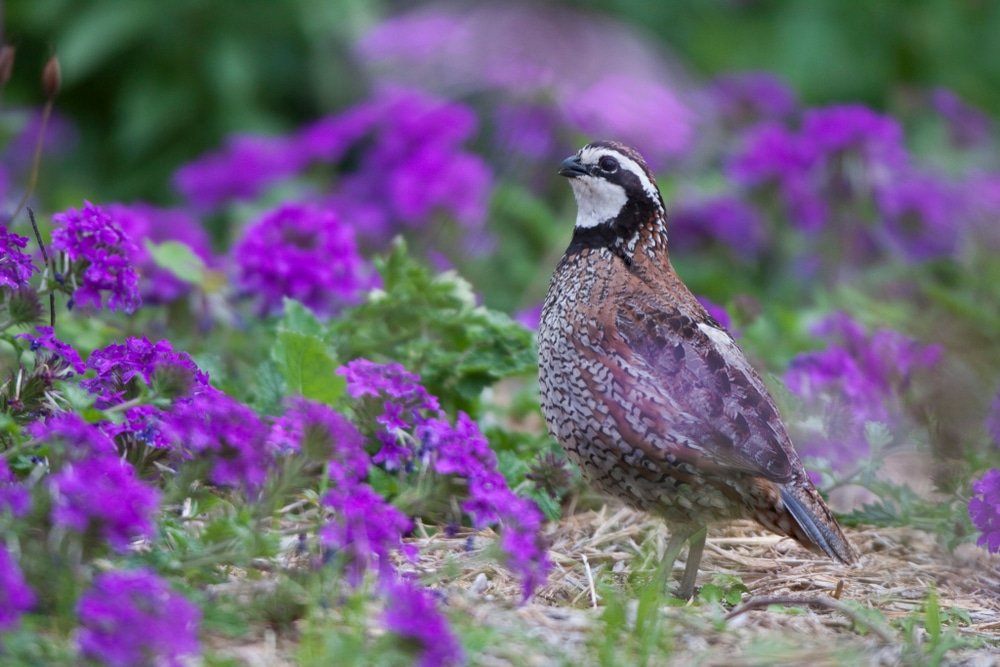
Conclusion
Virginia Quail (Colinus virginianus) are captivating birds with various intriguing characteristics that make them stand out among other avian species. Their striking plumage, unique whistling calls, ancestral connection to Bobwhite Quails, and cooperative breeding behavior add to their allure.
Despite facing conservation challenges due to habitat loss and hunting pressures, efforts have been made to protect this species through responsible land management practices and conservation programs. By raising awareness about the importance of preserving their habitat and appreciating these remarkable birds, we can contribute to their continued survival and the overall biodiversity of our natural world.

